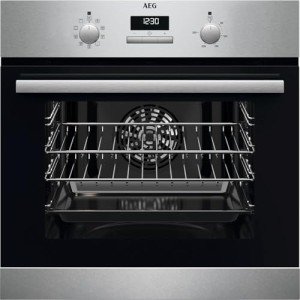Overview
-
Sectors Statybos
-
Posted Jobs 0
-
Viewed 20
Company Description
You’ll Be Unable To Guess Single Built In Oven’s Tricks
The Comprehensive Guide to Single Built-In Ovens: Features, Benefits, and FAQs
Intro
In modern-day cooking areas, the integration of home appliances is crucial to attaining a streamlined style. Amongst these home appliances, the built-in oven stands out as a staple for everyday cooking. In particular, single built-in ovens are getting appeal due to their space-saving design and effectiveness. This short article explores the features, benefits, and frequently asked concerns about single built-in ovens, helping house owners make notified choices.
What is a Single Built-In Oven?
A single built-in oven is a cooking appliance designed to be embedded within cabinetry, providing a smooth look that matches the kitchen’s visual. Unlike freestanding ovens, built-in variations provide a variety of features and designs that accommodate modern culinary requirements.
Key Features of a Single Built-In Oven
Single built-in ovens included a range of features that enhance performance and user experience. Here are some of the most crucial attributes:
| Feature | Description |
|---|---|
| Size and Capacity | Typically ranges from 24 to 30 inches in width; ideal for various kitchen sizes. |
| Cooking Modes | Numerous settings, including convection, baking, broiling, and often steam cooking. |
| Controls | Digital touch controls or standard knobs with exact temperature level settings. |
| Self-Cleaning Options | Many models include self-cleaning functions for easier upkeep. |
| Energy Efficiency | Designed to take in less energy, typically with an A+ energy ranking. |
| Safety Features | Consists of child locks, cooling systems, and temperature level sensors. |
| Design Options | Readily available in different finishes (stainless steel, black, etc) and styles (modern-day, classic). |
Advantages of Using a Single Built-In Oven
The adoption of Single Built In Oven built-in ovens offers many advantages:
- Aesthetics: They create a modern and polished look in the kitchen, mixing seamlessly with cabinetry.
- Space-Saving: Ideal for smaller kitchen areas, they are created to optimize area by being built into walls or cabinets.
- Increased Functionality: Many designs come with innovative cooking technology such as smart functions that permit push-button control by means of smartphone.
- Easy to Use: With intuitive controls, built-in ovens are user-friendly and appropriate for both novice and skilled cooks.
- Improved Cooking Performance: Convection designs distribute hot air for even cooking results.
Popular Brands and Models
Numerous brands control the single built-in oven market, each offering distinct features to deal with customer preferences. Here are some significant ones:
| Brand | Popular Models | Key Features |
|---|---|---|
| Bosch | HBN8451UC, HBL8453UC | European design, convection heat, Wi-Fi connection. |
| Electrolux | E30SO75GPS, E30SO75PPS | Variations in size, advanced barbecuing abilities. |
| Samsung | NV51K6650SG | Dual convection, clever technology, flexible cooking modes. |
| Whirlpool | WOS51EC0HS | Affordable, dependable, self-cleaning features. |
| LG | LWS3063ST | Smart technology, air fry mode, streamlined aesthetic appeals. |
Installation Considerations
Installing a single built-in oven involves specific considerations:
- Measurement: Ensure that the area allotted is compatible with the oven’s measurements.
- Ventilation: Adequate airflow needs to be preserved for safety and performance.
- Electrical Needs: Check voltage requirements and guarantee correct electrical outlets are readily available.
- Professional Installation: While some house owners might pick DIY, working with an expert can reduce setup concerns.
Often Asked Questions (FAQs)
-
How much space is needed for a built-in oven?
- A built-in oven normally requires a designated space that varies by model, generally from 24 to 30 inches in width. Always refer to the manufacturer’s requirements for precise measurements.
-
Can I install a built-in oven by myself?
- While some may attempt a DIY setup, it is often recommended to work with a professional to ensure proper fitting, electrical connections, and ventilation.
-
Are single built-in ovens more pricey than freestanding models?

- Normally, yes. Single built-in ovens tend to cost more due to their design, installation, and additional functions.
-
What are the distinctions between convection and routine ovens?
- Stove have a fan that distributes hot air throughout, resulting in even cooking. Traditional ovens depend on glowing heat, which may lead to hot areas and uneven cooking.
-
What upkeep is needed for a built-in oven?
- Routine cleansing, ensuring vents stay unblocked, and keeping an eye on functions. Numerous designs provide self-cleaning alternatives, which simplify maintenance.
Single built-in ovens represent a convergence of design, convenience, and performance in contemporary kitchen areas. With a wide variety of functions and designs offered, these ovens cater to numerous cooking needs and preferences. Whether you are an aspiring chef or a periodic home cook, purchasing an appropriate single built-in oven can enhance your cooking experience while raising your kitchen’s visual. Mindful factor to consider of features, installation requirements, and maintenance will result in a gratifying financial investment in this important kitchen home appliance.


